
From seed to feed: The story of the Topflite sunflowers
There’s always something magnetic about seeing a beautiful flower replicated en masse. This is certainly the case for our sunflowers, which since the 1970s have surprised and delighted those passing through Weston and Kakanui. This summer, visitors to the Oamaru area can spot the Topflite sunflowers on the west side of Thousand Acre Rd between Springfield Road and Gardiners Road.
Since they've become somewhat of an icon, here’s the backstory of our little yellow heroes.

From strong seed comes strong flowers
The seeds for our sunflowers are sown each October. They come from our own seed stores that we’ve selected and saved for over 50 years now. Each year we choose seeds from the plants that have the right attributes: not too tall, with a single flower that curves and bends over (so birds can’t get at it) and a full head of seed. Those are the ones we plant out the following season. Over time this process builds in good genetic diversity to the crop so we get strong, healthy sunflowers each year. New Zealand weather can be changeable so they need to be able to handle a bit of drama.
Nurturing nature’s good work
It’s hard to believe now but back when we first talked about planting sunflowers, people told us they’d never grow this far south. Well, it turns out they do! Our farms are in a dry area of North Otago and benefit from a nicely balanced micro-climate. We’re tucked away from the coastal storms and get reasonably long, hot summers in this part of New Zealand. The soil is wonderfully rich in minerals too, which is another reason why our sunflowers grow so abundantly here. It creates a nutritious profile of essential vitamins for the birds and chickens that consume the seeds in the final product.When is the best time to see the Topflite sunflowers?
It’s pretty slow growing until December when the weather heats up. During the germination period, we’re on crop maintenance — weeding, thinning the flowers and keeping an eye out for pests. As is our general approach to creating premium quality pet food, we aim to stay out of the way and let nature do its good work.
We usually get the first flower by New Year’s Day and by late January the flowers are in full bloom and at their most intense yellow. That’s the time of year to schedule your sunflower selfie! It’s also the time of year when lots of visitors arrive to holiday in North Otago’s summer hot spots or ride the Alps 2 Ocean cycle trail that passes by some of our fields.
We’re blooming Grammable!
While the sunflowers have always attracted their fair share of admirers, interest has grown vigorously in recent years. It may be due to the rising popularity of the Alps 2 Ocean (A2O) trail, named recently in a list of the top 30 “most Instagrammable” cycle trails around the world. The epic ride is one of New Zealand’s great cycle trips running 315 km from the Southern Alps to the Pacific Ocean, crossing both the Mackenzie and Waitaki Districts. The final leg of the trail takes cyclists past some of our fields as they descend toward Oamaru on Ngapara-Weston Rd. When they are blooming with sunflowers, it's quite a treat for the weary traveller after four or five days in the saddle! (And clearly an epic spot to post on social media)
Where can I see the sunflowers?
We plant in different locations each season but this year the sunflowers were sown on the west side of Thousand acre Rd between Springfield Rd and Gardiners Rd. Thanks to social media, word is spreading further afield and we now get lots of inquiries each summer about viewing the sunflowers. Many people seem to discover them online but there are also lots who remember sunflowers en masse from childhood holidays in the area. While we encourage appreciation from a distance (and a good selfie of course), we unfortunately can’t let people into the fields for a full-scale frolic. That’s because the hygiene and quality of the crops is paramount, and there’s also a safety risk with the farm equipment.
Sun followers?
People think sunflowers follow the sun but that’s not entirely true. Imagine someone planting their feet in one spot on the ground and stretching both their hands up in the direction of the sun. The hand nearer to the sun will be higher than the other, and then it switches depending on where the sun is. It’s actually the result of one side of the stem elongating, followed by the other. This is how they absorb as much sunlight as possible.
How are the sunflowers harvested?
Harvest time is late March or early April. Once the back of the head and sunflowers become an intense yellow, they are defoliated. We do this because if left to dry naturally, the wild birds can get at the seed before us.

The seed dries off for two or three weeks before harvesting, which is done with a special fixture called a head snatcher.
The moisture content at this point is about 20 – 30%. It’s dried in a granary until the moisture is reduced to 10%. The threshing process takes out sticks and broken seeds leaving nice shiny, striped seed to be stored in silos and eventually made into the delicious feed your pets know and love.
What are the sunflowers grown for?
We originally planned to grow sunflowers to crush for oil but then quickly moved to growing them for the bird clubs in 1974. That’s because in those days, seeds for bird feed were all imported and as a result, heat treated to stop germination (for biosecurity reasons). However that process strips the nutrients out of the seed, particularly essential vitamins for good bird health like Vitamin A and E. It also reduces proteins, amino acids and fats and stops enzymes working. It’s easy to see why bird keepers were keen to get their hands on our seeds!

Today the seeds are also used in a range of nourishing feed products for birds including our Soak n’ Sprout and Aviary Mix for aviary birds and our Wild Bird Coarse Seed Mix. Pet rabbits and guinea pigs also love the sunflower seeds in our Rabbit & Guinea Pig Mix and the delightful Bonanza Bar treats.
We are grateful to all our loyal customers, who over the years have nurtured the smallest members of their families with our seeds, told us what they needed and what they loved (as well as the odd thing they didn’t love!) That’s why we’re so passionate about making our product as local as possible. How great is it to drive (or cycle) past a field of sunflowers knowing that it’s right where the seeds in your Wild Bird Seed Cone or Rabbit and Guinea Pig Nibble Sticks came from?

Related Posts
Life & Leisure
Have you got the latest issue? The November / December issue of Life & Leisure is currently hitting the shelves t...
Top Seed: What we grow – and why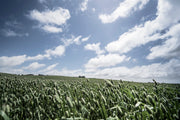
While we’re best known for limelight-hogging sunflowers there are plenty of other ingredients in Topflite products th...
From seed to feed: The story of the Topflite sunflowers
There’s always something magnetic about seeing a beautiful flower replicated en masse. This is certainly the case for...
Product spotlight: Parrot Picks
Parrot Picks are the latest in our locally grown hand-crafted aviary bird range. They’re delicious, nutritious and ...
Super Sprout Feeding Instructions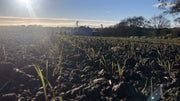
Is it a bird? Is it a plane? Wait…it’s a bird? Great, they’ll surely love Super Sprout. Did you know? When a seed ...
Maximise your mix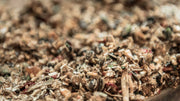
A soft food mixing tip from ‘The Don’. Here’s a tip from Don Birch – the renowned bird rearer from the Hawke’s Bay ...
Finch Nutrition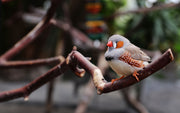
In addition to fresh, clean water, quality seed should form the basis of your finch’s diet (60-70%), and can be provi...
Cockatiel Nutrition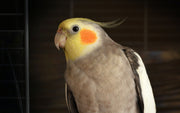
Looking after your Cockatiels In addition to fresh, clean water, quality seed should form the basis of your cockatiel...
Canary Nutrition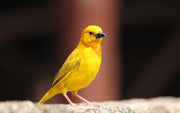
Optimal canary nutrition can be relatively easy to achieve.In addition to fresh, clean water, quality seed should for...
Returning to the nest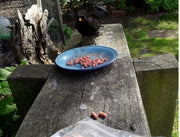
Welcoming family home for Christmas. We often talk about what it means to welcome wild birds into the family. What ...
Discomfort food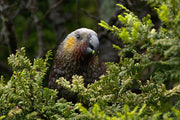
Killing with kindness. Tragic news of a kākā chick’s death in Auckland highlights the need for wider education on wha...
How to use a bird feeder correctly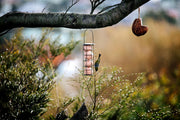
Feeding wild birds may seem easy at first glance. But in fact it requires more than just putting out bird seed. By us...
Wanted in winter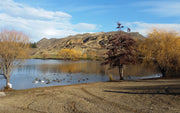
Provide an extra boost for wild birds when food is scarce. We all know that with low temperatures come cravings for h...














